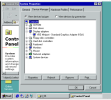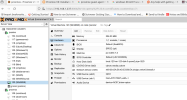Hi everyone! I would like to set up a Windows 98 Proxmox VM so that I can play some old games from my childhood. Ideally I would like this VM to run on my rack server, and just connect to it with SPICE. However, there are some issues with graphics and audio drivers: I get only minimal resolution and colours, and the system doesn't detect an audio output device.
Someone on YouTube has managed to get this set up and working, but I'm not familiar with the setup and struggle to follow: https://www.youtube.com/watch?v=4J9Br9ojkhg
Any tips to get sound and video working better on Win98 through SPICE? Thanks!
Someone on YouTube has managed to get this set up and working, but I'm not familiar with the setup and struggle to follow: https://www.youtube.com/watch?v=4J9Br9ojkhg
Any tips to get sound and video working better on Win98 through SPICE? Thanks!



